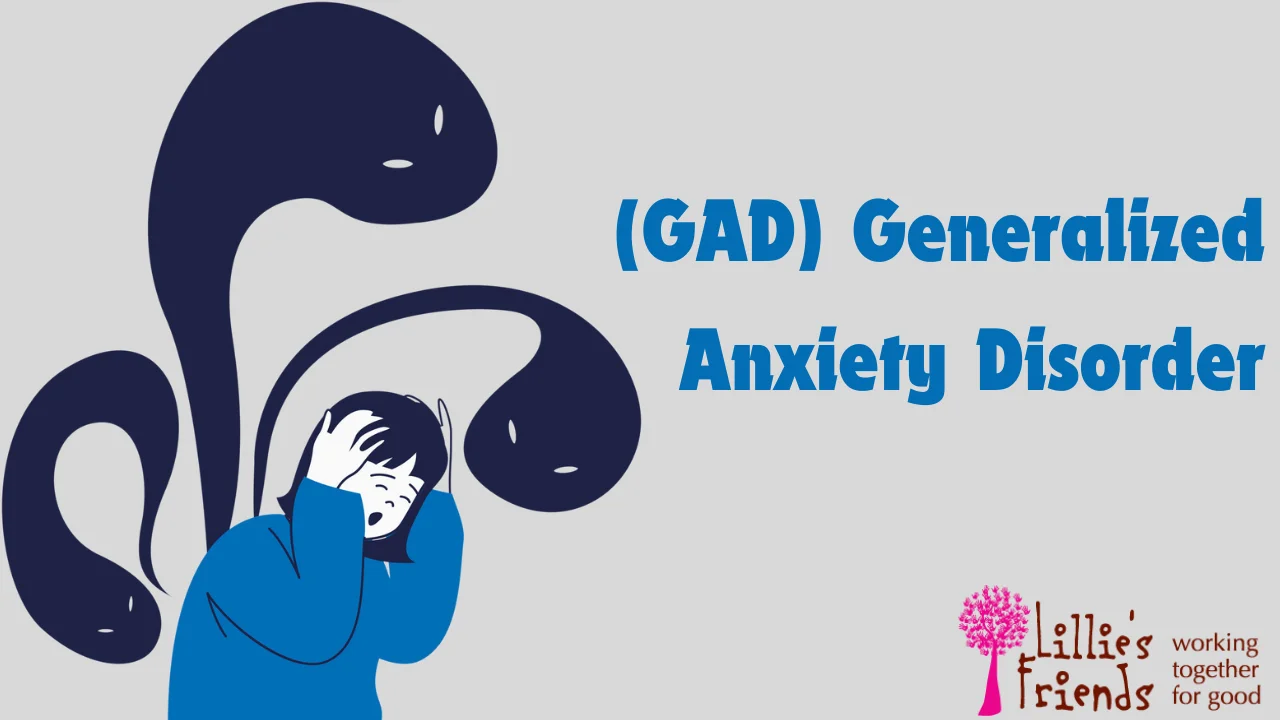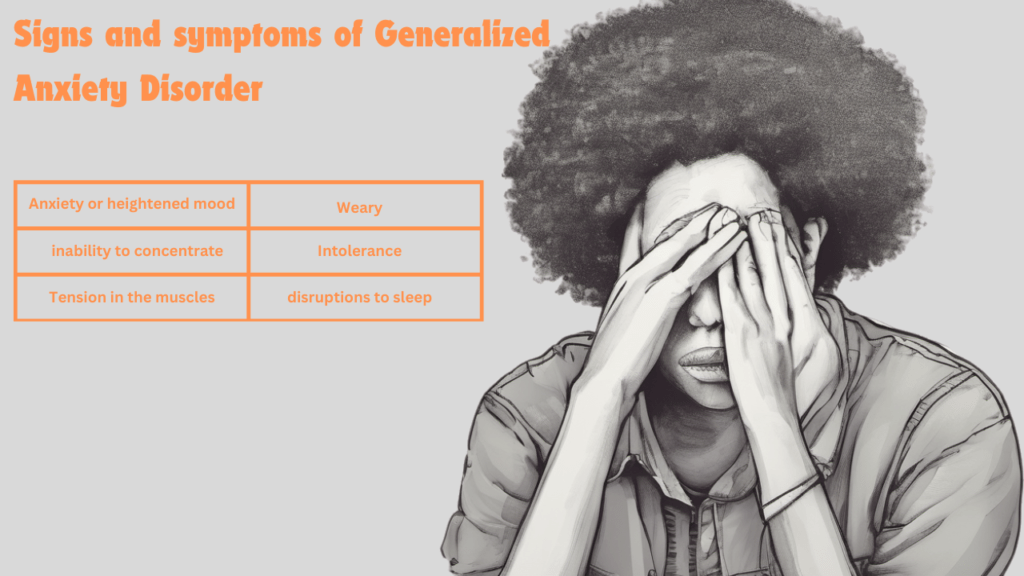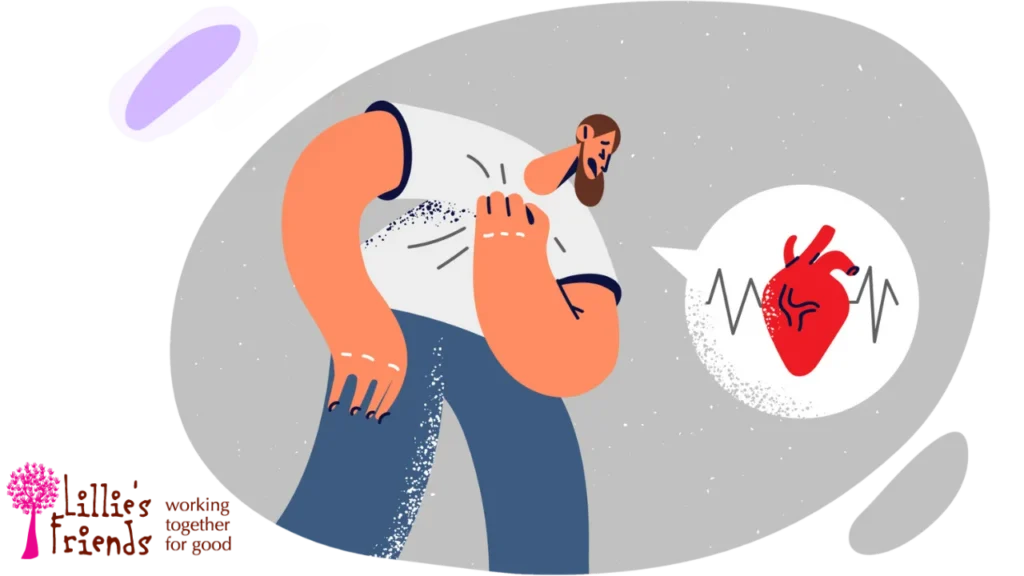lillies's blog

A common mental health illness called generalized anxiety disorder (GAD) is characterized by excessive, unrelenting worry about a variety of everyday situations. Unlike specialized phobias or panic disorders, which usually have identifiable triggers, generalized anxiety disorder (GAD) is not limited to a single worry or experience. Rather, it permeates a person’s daily existence, potentially upsetting their personal, academic, and professional lives.
The National Institute of Mental Health (NIMH) estimates that 5.7% of adult Americans [1*] have had generalized anxiety disorder at some point in their life. Women are diagnosed with it more often than males since they are twice as vulnerable. It is acknowledged as a chronic illness that might last for many years or perhaps a lifetime, particularly in the absence of suitable therapy.
Signs and symptoms of Generalized Anxiety DisorderAdults with generalized anxiety disorder may exhibit a range of psychological, emotional, and physical symptoms. The primary indicator is persistent and severe anxiety over many aspects of life, including work, health, family, finances, and education. The anxiety is usually greater than the actual likelihood or effects of the circumstance causing the fear.
In addition to mental symptoms, people with GAD may also have a range of physical ones, such as:
Anxiety or heightened mood
Weary
inability to concentrate
Intolerance
Tension in the muscles
disruptions to sleep

These symptoms must cause significant discomfort or interfere with everyday activities for a minimum of six months in order to be officially diagnosed as GAD.
Differentiating Between GAD and Other Mental Health ConditionsGiven that the symptoms of generalized anxiety disorder might coincide with those of other mental health illnesses, diagnosing it can be challenging. This is a detailed comparison between generalized anxiety disorder (GAD), panic disorder, post-traumatic stress disorder, and other conditions.
Anxiety vs. GADTension and concern are frequent characteristics of anxiety, which often arises in reaction to stimuli. Conversely, generalized anxiety disorder is a mental health illness characterized by persistent, excessive concern that interferes with day-to-day functioning. In contrast to typical stress-related anxiety, generalized anxiety disorder (GAD) does not go away and often centers on issues related to family, money, or health.
Anxiety vs Panic DisorderAlthough major anxiety is a feature of both GAD and panic disorder, they are not the same. Anxiety that is episodic and manifests as abrupt panic episodes that are physically and emotionally distressing is known as panic disorder. In contrast, GAD is characterized by chronic, persistent anxiety that is accompanied by excessive concern over a wide range of life conditions.
Heart palpitations, another name for rapid heartbeat, are a medical disorder where the heart beats or raced too quickly for a variety of reasons, including anxiety. The normal heart rate is between 60 to 100 beats per minute , but when a person has anxiety-related heart palpitations, their heart rate increases to above 100 beats per minute.
According to a recent research, at least one in four adult Americans over 40 have irregular heartbeats, which is a prevalent cause of heart palpitations. These include heart rates that are either too high or too low.
Primary Heart Palpitations CausesHeart palpitations may be caused by many reasons in patients , such as:
- Stress, anxiety, and panic attacks
- The menopause
- Vigorous exercise
- Low blood pressure
- Drinking too much alcohol
- A time or pregnancy
- Reduced quantities of red blood cells (anemia)
- A drop in blood glucose levels
- Unusual electrolyte levels in the body
- Certain drugs, such as coffee and stimulants
- Systemic illness caused by thyroid hormones
- Lack of sleep (may result in morning heart palpitations)

Anxiety is one of the most frequent causes of heart palpitations, while there are many other potential reasons as well, including those listed above.
What Is a Heart Palpitation Caused by Anxiety?Heart palpitations and anxiety usually go hand in hand. Heart palpitations may sometimes manifest as a sign of depression.
Heart palpitations caused by worry may cause a person’s heart to race, flutter, or miss a beat. The ears, throat, or neck all have a hammering sensation from the heart. After an anxiety episode, this is how people usually feel, however palpitations may also be brought on by extreme enthusiasm.
Here’s a quick rundown of how this procedure works: The autonomic nervous system (ANS) is impacted by anxiety, which sets off the fight-or-flight response . This speeds up breathing, heart rate, and blood pressure in order to enable quick blood flow to the body’s other organs.
Be aware that having bipolar illness, anxiety disorders, or other mental health issues may influence how a person’s body responds to stressful circumstances.
When Heart Palpitations Should Concern YouPatients who have palpitations due to worry may not need continuous monitoring since these episodes are often not alarming. The majority of heart palpitations are transient in nature, often ending within minutes, hours, or even seconds following the first anxiety-inducing event.
Nonetheless, there are times when a patient has to be concerned about heart palpitations. They may cause significant worry, for instance, if they indicate arrhythmias , which are irregular heartbeats. If they are accompanied by any of the following symptoms, they may also be reason for concern:
- The individual has lightheadedness or vertigo
- Constantly gets headaches
- Has discomfort in the chest
- Loses consciousness during palpitations
- Abruptly feels exhausted and out of breath
If someone has diaphoresis (extreme sweating), discomfort, stiffness in the neck area, shortness of breath, or a nervous sensation in the chest, they should get medical help right once.
The mental illness known as obsessive-compulsive disorder (OCD) is characterized by compulsive behaviors and obsessive thinking. The lifetime prevalence of OCD in people in the United States is 2.3 [1*].
The purpose of this page is to clarify the complex nature of OCD, with an emphasis on adult OCD symptoms. We will explore the symptoms of OCD episodes, discover how to spot the early warning indicators of OCD, and dispel common misconceptions about this intricate disorder.
The Character of AddictionsObsessive thoughts associated with OCD are more than merely severe or recurrent anxieties about ordinary everyday issues. These are undesired, recurring ideas, feelings, or visions that cause worry, anxiety, or obsessions. Even though they are obtrusive and often illogical, they are quite challenging to ignore or manage.
Not only are obsessive thoughts exaggerated worries about actual issues, but they are often about things that make no sense or are unreasonable in the eyes of others. Usually, the OCD sufferer understands that these obsessions are a creation of their own minds, but they feel unable to put an end to them. As examples, consider:
- Compulsive worries about filth or becoming sick from handling things other people have touched.
- Doubting and finding it difficult to accept ambiguity. Individuals can double-check that they’ve shut off the stove or closed the door.
- Extreme tension when items aren’t symmetrical, in order, or facing the same direction.
Everyone has sometimes experienced being caught in a cycle of unwanted, intrusive thoughts. Though these ideas are among the frequent features of OCD, they are not always linked to the illness. It is advised to see a mental health specialist with persistent thoughts:
- Result in severe worry and suffering;
- are accompanied by a strong want to engage in obsessive activities;
- They are bothersome enough to interfere with your everyday activities;
- They are too challenging to manage even when you are aware of their irrationality.
Be aware that these kinds of thoughts may indicate depression or anxiety disorders rather than OCD. It is crucial to seek the advice of a healthcare professional who can do a thorough examination and offer a diagnosis.
